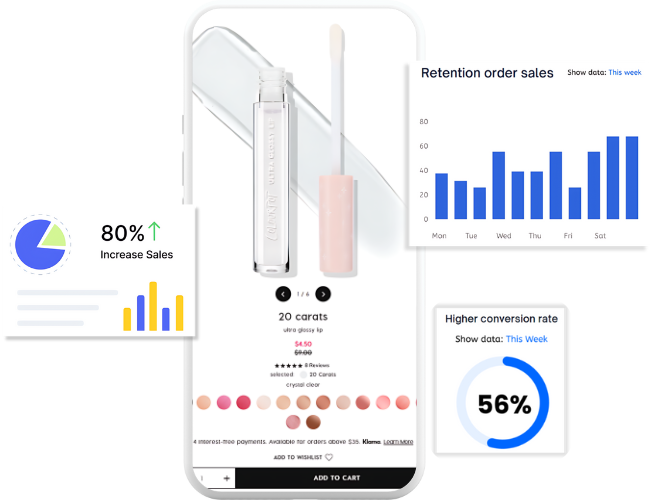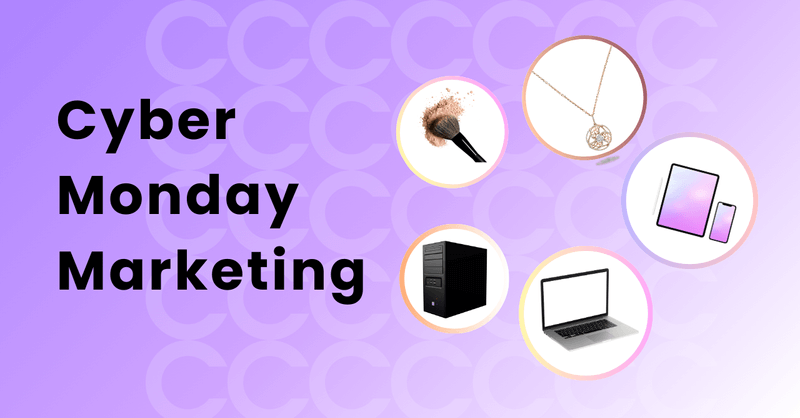Reading this article means you’ve made the choice to establish your business on Shopify, which is a great idea. The eCommerce platform has around 4.4 million users and has generated over $7 Billion in 2023.
However, building a successful business in Spotify requires a proper understanding of its components and one of them is the Shopify URL. Your store’s Uniform Resource Locator is its address on the internet; a way for people to find you without accidentally visiting a similar store.
This article will dive deeper into this simple but important part of your Shopify journey. In the end, you’ll understand your Shopify URL, its importance, how to change it, and more. Read on!
What is a Shopify URL?
Every website has a Uniform Resource Locator also known as a URL, and the same applies to your Shopify store. This string of characters is your website’s address, making it easy to find you in the internet’s vast sea of websites.
When you open your store on Shopify, the platform will assign a default URL that looks something like “yourstorename.myshopify.com.” So, if your store is named Kids Toys, your automatic Shopify URL will be “Kidstoys.myshopify.com.”

Importance Of A Shopify URL
As previously mentioned, the main purpose of your Shopify URL is to help people find your online business easily. However, there are other noteworthy reasons to put extra effort into your Shopify URL.
These include:
1. Displays The Purpose Of Your Business
This address advertises the purpose of your business and encourages potential customers to click your link. For example, imagine a website named Kelviniz.myshopify.com; seeing this website raises several questions but the main inquiry will be “what do they do?”.
In reality, most people aren’t curious enough to click the link to answer that question. However, Imagine a website named Kelvinshoes.myshopify.com. Viewers will have a better idea of the purpose of this online business.
2. Makes It Visible In Search Results
It’s also worth noting that your URL name also helps search engines like Google and Bing to bring up your site in search results. These platforms work similar to the human mind as they often depend on your site’s URL to determine what it’s about.
Therefore, it’s a crucial element in Search Engine Optimization (SEO), which is another important aspect of getting clicks on your platform. However, some experts argue that it’s not a make-or-break strategy as other marketing measures can make your site visible on search results.
Nevertheless, an optimized domain name is one way to boost visibility on search engines.
3. For People To Remember
Every business prioritizes repeat patronage, but that may be difficult considering that the competition is a few clicks away. One way to ensure your customers or potential ones return to your online store is to use a URL that they can remember.
For example, which website is easier to remember – Cetridanxy.myshopify.com or Fishinggear.myshopify.com? The former is complex and unconventional compared to the familiarity of the latter domain name.
These factors are why we recommend picking a simple and memorable name because it makes you easy to find by search engines and people.
How to change a Shopify store URL?
Naturally, your website domain is a crucial marketing piece as it makes you more visible online; however, the benefits are only possible with a customized Shopify URL. Most people find the default Shopify domain name unattractive as it makes the look poorly organized and unreliable
Also, customers tend to view a website with a standalone URL rather than the default one because they don’t appear new or sketchy. Therefore, your next step after opening a Shopify store is to change the Shopify URL.
5 steps to change Shopify URL
Before going through the process of changing your store’s URL, understand that you first need to get a personal domain. A domain is a more simplified address than the default one Shopify provides.
So, instead of Kevinshoes.myshopify.com, it just becomes Kevinshoes.com. This makes your store look more professional and reliable. If you already have a domain name, then you’re ready to set your Shopify primary domain.
The steps to customize the Shopify URL are as follows:
- Open your Shopify dashboard.
- Open ‘Settings.’
- Click ‘Domains.’
- Select ‘Change to a new myshopify.com domain.’
- Replace the ‘myshopify’ URL with the new one you created.
- Click ‘Add domain’.
Note that you don’t need to go too far to get a domain for your Shopify website because it already has a built-in system for buying a new one. To do this, simply enter your Shopify admin, go to Settings > Domains, then click Buy new domain.
After, type in the name of the domain you want to buy, confirm if it’s available and suits your budget, and then make your purchase.
Also, keep in mind that you can only change your default Shopify URL once. If you need to modify it again, you’ll have to start a new trial or at least, contact Shopify directly for assistance.
Pro Tip: Ensure your Shopify URL matches your website name. This may be tricky since most simple URLs are taken; however, you can make minor modifications that still make the website professional and easy to remember.

How to set up unique URLs for specific countries or regions?
Your Shopify URL is your address online, and like a real home address, you may need to specify the country. However, this tiny detail in your Shopify URL mainly applies to international domains.
By setting up a unique URL linked to your country, you’ll access a localized version of Shopify built for that region. This means your online business will switch language and currency to match the location displayed on your URL.
Note that these special domains can appear in different formats on Shopify, and they include:
- top-level domains: your-shop-name.fr
- subdomains: fr.your-shop-name.com
- subfolders: your-shop-name.com/fr-fr
Choosing the best method may be tricky, but it primarily depends on your website’s SEO strategy. Fortunately, Shopify allows you to choose one or a combination of formats for your online store. This feature lets you display your URL in ways that best suit your marketing campaign.
However, if you’re setting up your Shopify store for the first time and find unique URLs complicated, it’s best to use the subfolders format. This option is recommended by experts and even Shopify for straightforwardness and reliable SEO benefits.
To set up international domains for specific countries or regions, you need to follow these steps:
- Create the domain/subdomain (skip if using subfolders)
- Add a market or region
- Select Domains and languages
- Preview your market
- Set Market Status as active
Importance Of Shopify Markets and International Domains
Setting up your URL for a specific region seems like an unnecessary hassle, but it is crucial for business, especially if you sell worldwide. The first reason is that Google struggles with stores that operate multiple currencies.
Customers in other countries are more likely to trust you when you advertise your offering in their country’s language and currency. It’s also an SEO best practice since Shopify adds hreflang tags to target a page to the right audience and generate sitemaps for each domain and language.
Lastly, using the appropriate Shopify market and international domains creates a more engaging experience for shoppers as they feel relaxed in a familiar eCommerce atmosphere.
What is the 404 URL in Shopify and how to fix it?
The last thing you want visitors to see on your online store is the dreaded 404 error page. The Shopify 404 page is a standard error message that pops up when a part of your website is inaccessible or doesn’t exist.
Sometimes, the error can happen due to a broken link, temporary server errors, or a deleted page. Nevertheless, this dreaded message can ruin the shopping experience for your customers and drive them to your competitors.
Fortunately, Shopify allows eCommerce entrepreneurs to modify their 404 page to manage the damage and avoid losing a possible customer. The primary elements to maximize the 404 page include:
- Friendly message that the page isn’t available
- Link to key pages and categories in your store and do navigation
- Search bar to keep them looking through your inventory
- Ensure the page is consistent with your shop’s branding
- Contact information for more intimate support
Fixing the Shopify 404 URL Page
Despite the customized 404 page, you still need to rectify the error before it costs you potential customers, especially during a marketing campaign. Some suggestions include:
1. Check The Link
The Shopify 404 page only appears when the website URL doesn’t link to a valid page, so I’m this case, check the link. Ensure URLs are encoded correct for unique characters to prevent potential issues. You can also create redirects or reinstate deleted pages.
2. Recreate The Page
If you’ve tried different methods with little results, the best option may be to recreate the page. Simply go through your store’s list of pages, verify the missing one, rebuild it from scratch, save the finished work, and then publish.
Test the new page by visiting it through another device, then create a 301 redirect from the previous URL to maintain SEO rankings and a smooth user experience.
Optimize store for faster speed and higher rankings
3. Adjust Theme Settings
Sometimes, Shopify is responsible for the 404 errors due to issues with some features. One recommendation that works for many online sellers is checking your theme settings. To do this, simply go through your theme page template, ensure it’s set properly with no broken links, then test your site from another device.
4. Clear caches
Cache can also cause page errors in your online store and clearing them can significantly improve its performance. Simply access your Administration panel, find the theme you currently use, locate Assets in the theme editor, and you’ll find a file named “theme.js” or something similar.
Click this file, include a version parameter to your asset URLs, and then save the chances. Test your Shopify store to see if the error has been resolved.
5. Check The Servers
Every major company has server downtime, and Shopify has no exemption. There’s a possibility your 404 page may be the platform’s fault and a server check will verify that suspicion. Simply visit the Shopify Status Page and check server logs for errors and misconfigurations.
You can use testing tools like Apache JMeter or Loader.io to check server performance and confirm whether Shopify is to blame for the downtime.
What’s Next?
Your Shopify URL is a personal address for people online to easily locate you. But at the same time, it plays a crucial role in your store’s identity. An optimized URL tells people about your store’s purpose and helps Google identify it faster. While it may not be a make-or-break SEO strategy, it’s a best practice that new store owners may want to implement.
Undoubtedly, running a Shopify store can be mentally draining as you worry about shipping and fulfillment, customer service, analytics and monitoring, etc. Fortunately, Channelwell can help make the journey easier with its all-in-one solution focused on helping you boost sales.
Explore our solutions today and join 420,000 Shopify merchants to build multimillion-dollar stores!
FAQs About Change Shopify URL
Note: This blog was originally written in English and translated using an automated tool to make the content accessible to a global audience. We believe in sharing valuable insights with everyone and apologize for any inaccuracies. If you spot any errors, please feel free to contact us for corrections. Your feedback helps us improve and ensures the content’s value is fully realized.

Zero Tan
Content Specialist
As an eCommerce content creator, I aim to share insights, trends, and strategies that may help you navigate the digital marketplace more effectively. My content is designed to provide practical value and inspiration, supporting your business growth and helping you stay informed about industry developments.




